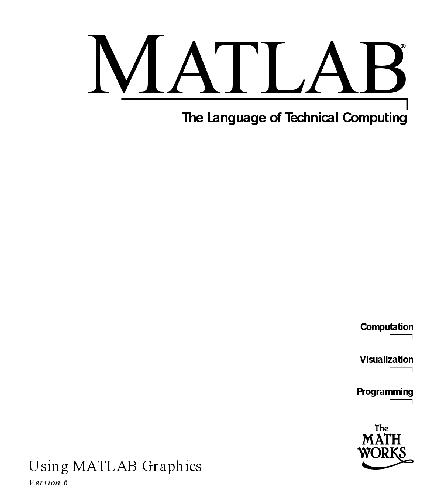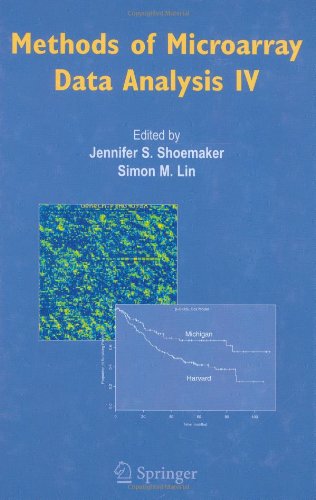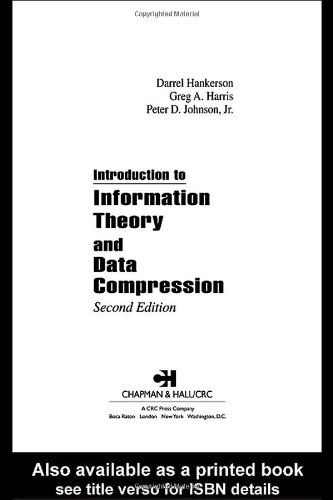The Math Works Inc.
Table of contents :
Graphics……Page 19
Overview of MATLAB Graphics……Page 21
Introduction……Page 22
Plotting Your Data……Page 23
Anatomy of a Plot……Page 24
Using Functions to Edit Graphs……Page 25
Using Plot Editing Mode……Page 26
Selecting Objects in a Graph……Page 27
Moving and Resizing Objects……Page 28
Editing Objects in a Graph……Page 29
Saving a Graph in MAT-File Format……Page 30
Printing Figures……Page 31
Getting Help……Page 32
Zooming In and Out on an Axes……Page 33
Rotating 3-D Axes……Page 34
Using the Property Editor……Page 35
Closing the Property Editor……Page 36
Editing Object Properties……Page 37
Navigating Among Objects in a Graph……Page 38
Identifying Objects in a Graph……Page 40
Applying Your Changes……Page 41
Adding Plots of Statistics to a Graph……Page 42
Saving Statistics to the Workspace……Page 43
Basic Plotting……Page 45
Creating Plots……Page 46
Specifying Line Style……Page 48
Specifying the Color and Size of Lines……Page 50
Adding Plots to an Existing Graph……Page 51
Plotting Only the Data Points……Page 52
Plotting Markers and Lines……Page 53
Line Styles for Black and White Output……Page 54
Setting Default Line Styles……Page 55
Line Plots of Matrix Data……Page 57
Plotting Imaginary and Complex Data……Page 59
Combining Linear and Logarithmic Axes……Page 60
Axis Limits and Ticks……Page 63
Example – Specifying Ticks and Tick Labels……Page 66
Setting Aspect Ratio……Page 68
Displaying Multiple Plots per Figure……Page 70
Default Color Scheme……Page 72
Formatting Graphs……Page 75
Overview……Page 76
Using the Title Option on the Insert Menu……Page 77
Using the Property Editor to Add a Title……Page 78
Using the title Function……Page 79
Adding a Legend to a Graph……Page 80
Using the Legend Function……Page 81
Positioning a Legend……Page 82
Editing a Legend……Page 83
Removing a Legend……Page 84
Adding Axes Labels to a Graph……Page 85
Using the Property Editor to Add Axes labels……Page 86
Using the Label Commands……Page 87
Adding Text Annotations to a Graph……Page 89
Creating Text Annotations with the text or gtext Command……Page 90
Example – Aligning Text……Page 95
Editing Text Annotations……Page 96
Including Symbols and Greek Letters in Text Strings……Page 97
Example – Multiline Text……Page 99
Creating Arrows and Lines in Plot Editing Mode……Page 101
Editing Arrows and Line Annotations……Page 102
Adding Plots of Basic Statistics to a Graph……Page 103
Example – Plotting the Mean of a Data Set……Page 104
Statistics Plotted by the Data Statistics Tool……Page 106
Viewing Statistics for Multiple Plots……Page 107
Saving Statistics to the MATLAB Workspace……Page 108
Creating Specialized Plots……Page 111
Introduction……Page 112
Types of Bar Graphs……Page 113
Stacked Bar Graphs to Show Contributing Amounts……Page 116
Specifying X-Axis Data……Page 118
Overlaying Plots on Bar Graphs……Page 120
Area Graphs……Page 122
Comparing Datasets with Area Graphs……Page 123
Pie Charts……Page 125
Removing a Piece from a Pie Charts……Page 127
Histograms in Cartesian Coordinate Systems……Page 128
Histograms in Polar Coordinate Systems……Page 130
Specifying Number of Bins……Page 131
Two–Dimensional Stem Plots……Page 133
Combining Stem Plots with Line Plots……Page 136
Three-Dimensional Stem Plots……Page 137
Stairstep Plots……Page 140
Compass Plots……Page 142
Feather Plots……Page 143
Two-Dimensional Quiver Plots……Page 145
Three-Dimensional Quiver Plots……Page 146
Creating Simple Contour Plots……Page 148
Labeling Contours……Page 150
Filled Contours……Page 151
Drawing a Single Contour Line at a Desired Level……Page 152
The Contouring Algorithm……Page 153
Changing the Offset of a Contour……Page 154
Displaying Contours in Polar Coordinates……Page 155
Interactive Plotting……Page 159
Movies……Page 161
Example – Visualizing an FFT as a Movie……Page 162
Erase Modes……Page 163
Displaying Bit-Mapped Images……Page 167
Overview……Page 168
Data Types……Page 170
Indexed Images……Page 172
Intensity Images……Page 173
RGB (Truecolor) Images……Page 175
8-Bit and 16-Bit Indexed Images……Page 177
8-Bit and 16-Bit RGB Images……Page 178
Other 8-Bit and 16-Bit Array Support……Page 179
Summary of Image Types and Numeric Classes……Page 180
Reading a Graphics Image……Page 181
Obtaining Information About Graphics Files……Page 182
Displaying Graphics Images……Page 184
Controlling Aspect Ratio and Display Size……Page 185
CDataMapping……Page 189
XData and YData……Page 190
EraseMode……Page 192
Printing Images……Page 194
Converting the Data or Graphic Type of Images……Page 195
Basic Printing and Exporting……Page 197
Dialog Box Overview……Page 199
Printing to a Printer Using the Defaults……Page 200
Printing to a Printer at Screen Size……Page 202
Printing to a Printer, Locking the Ticks and Limits of the Axes……Page 203
Printing to a Printer, Setting the Paper Size……Page 204
Printing to a Printer, Setting the Size of and Centering a Figure……Page 205
Printing to a Nondefault Printer……Page 207
Printing to a Printer Using GhostScript……Page 209
Printing a Figure to a File……Page 210
Exporting a Figure to a File in a Specific Graphics Format……Page 212
Exporting a Figure to the Clipboard……Page 214
Which Figure Is Printed……Page 218
Default Settings and How to Change Them……Page 219
Using Print Dialog Boxes……Page 222
From the Command Line……Page 223
Changing the Figure’s Settings……Page 226
Printing the Figure……Page 237
Exporting a Figure in Graphics Format……Page 243
Exporting to a File……Page 244
Exporting to the Clipboard……Page 246
Troubleshooting……Page 251
Printing Problems……Page 252
Exporting Problems……Page 255
General Problems……Page 259
Handle Graphics Objects……Page 263
Overview……Page 264
Graphics Object Hierarchy……Page 265
Types of Graphics Objects……Page 266
Handle Graphics Objects……Page 267
Default Values……Page 271
Properties Common to All Objects……Page 272
Graphics Object Creation Functions……Page 274
Example – Creating Graphics Objects……Page 275
High-Level Versus Low-Level……Page 277
Simplified Calling Syntax……Page 278
Setting Property Values……Page 280
Querying Property Values……Page 282
Factory-Defined Property Values……Page 284
How MATLAB Searches for Default Values……Page 285
Defining Default Values……Page 287
Examples – Setting Default LineStyles……Page 288
The Current Figure, Axes, and Object……Page 292
Searching for Objects by Property Values — findobj……Page 294
Copying Objects……Page 295
Deleting Objects……Page 297
Preparing Figures and Axes for Graphics……Page 299
Targeting Graphics Output with newplot……Page 301
Example – Using newplot……Page 302
Testing for Hold State……Page 304
Protecting Figures and Axes……Page 305
The Close Request Function……Page 307
Handle Validity Versus Handle Visibility……Page 308
Saving Handles in M-Files……Page 310
Properties Changed by Built-In Functions……Page 311
Axes Properties……Page 313
Axes Topics……Page 314
Creating Axes with Specific Characteristics……Page 315
The Position Vector……Page 317
Units……Page 318
Placing Text Outside the Axes……Page 319
Multiple Axes for Different Scaling……Page 320
Individual Axis Control……Page 322
Setting Axis Limits……Page 323
Setting Tick Mark Locations……Page 324
Changing Axis Direction……Page 325
Example – Double Axis Graphs……Page 328
Automatic-Mode Properties……Page 331
Specifying Axes Colors……Page 334
Example – Simulating Multiple Colormaps in a Figure……Page 337
Calculating Color Limits……Page 338
Defining the Color of Lines for Plotting……Page 341
Line Styles Used for Plotting – LineStyleOrder……Page 343
Figure Properties……Page 345
Figure Topics……Page 346
The Position Vector……Page 347
Example – Specifying Figure Position……Page 349
Indexed Color Displays……Page 351
Colormap Colors and Fixed Colors……Page 352
Using a Large Number of Colors……Page 353
Nonactive Figures and Shared Colors……Page 355
Dithering Truecolor on Indexed Color Systems……Page 356
Double Buffering……Page 359
Selecting a Renderer……Page 360
Specifying the Figure Pointer……Page 362
Defining Custom Pointers……Page 363
Interactive Graphics……Page 367
3-D Visualization……Page 369
Creating 3-D Graphs……Page 371
Topics in 3-D Graphing……Page 372
A Typical 3-D Graph……Page 373
Line Plots of 3-D Data……Page 374
Mesh and Surface Plots……Page 376
Visualizing Functions of Two Variables……Page 377
Surface Plots of Nonuniformly Sampled Data……Page 379
Parametric Surfaces……Page 381
Hidden Line Removal……Page 383
Colormaps……Page 384
Indexed Colors – Direct and Scaled Colormapping……Page 387
Example – Mapping Surface Curvature to Color……Page 388
Altering Colormaps……Page 390
Truecolor……Page 392
Texture Mapping……Page 395
Defining the View……Page 397
View Definition Topics……Page 398
Specifying Azimuth and Elevation……Page 400
Defining Scenes with Camera Graphics……Page 404
Camera Toolbar……Page 405
Orbit Camera……Page 408
Orbit Scene Light……Page 409
Pan/Tilt Camera……Page 410
Move Camera Horizontally/Vertically……Page 411
Move Camera Forward and Backwards……Page 412
Zoom Camera……Page 413
Camera Roll……Page 414
Walk Camera……Page 415
Camera Graphics Functions……Page 417
Dollying the Camera……Page 418
Graphing the Volume Data……Page 420
Specifying the Light Source……Page 421
Implementing the Fly-Through……Page 422
Low-Level Camera Properties……Page 426
Moving In and Out on the Scene……Page 427
Rotation Without Resizing of Graphics Objects……Page 429
Rotation About the Viewing Axis……Page 430
View Projection Types……Page 432
Projection Types and Camera Location……Page 433
Specifying Axis Scaling……Page 437
Specifying Aspect Ratio……Page 438
Example – axis Command Options……Page 439
Additional Commands for Setting Aspect Ratio……Page 441
Axes Aspect Ratio Properties……Page 442
Default Aspect Ratio Selection……Page 443
Overriding Stretch-to-Fill……Page 445
Effects of Setting Aspect Ratio Properties……Page 446
Example – Displaying Real Objects……Page 450
Lighting as a Visualization Tool……Page 453
Lighting Examples……Page 454
Lighting Commands……Page 455
Light Objects……Page 456
Adding Lights to a Scene……Page 457
Properties That Affect Lighting……Page 460
Face and Edge Lighting Methods……Page 462
Specular and Diffuse Reflection……Page 464
Ambient Light……Page 465
Specular Exponent……Page 466
Back Face Lighting……Page 467
Positioning Lights in Data Space……Page 470
Transparency……Page 473
Transparency Topics……Page 474
Making Objects Transparent……Page 475
Specifying Transparency……Page 476
Example – Transparent Isosurface……Page 478
Mapping Data to Transparency……Page 480
Example: Mapping Data to Color or Transparency……Page 481
Selecting an Alphamap……Page 483
Example: Modifying the Alphamap……Page 485
Creating 3-D Models with Patches……Page 487
Behavior of the patch Function……Page 488
Creating a Single Polygon……Page 490
Example – Defining a Cube……Page 492
Specifying Patch Coloring……Page 497
Example – Specifying Flat Edge and Face Coloring……Page 499
Coloring Edges with Shared Vertices……Page 500
Indexed Color Data……Page 502
Interpolating in Indexed Color Versus Truecolor……Page 505
Volume Visualization Techniques……Page 507
Volume Visualization Topics……Page 508
Selecting Visualization Techniques……Page 509
Steps to Create a Volume Visualization……Page 510
Volume Visualization Functions……Page 511
Techniques for Visualizing Scalar Data……Page 513
Visualizing MRI Data……Page 514
Example – Slicing Fluid Flow Data……Page 520
Modifying the Color Mapping……Page 523
Example – Isosurfaces in Fluid Flow Data……Page 525
Isocaps Add Context to Visualizations……Page 527
Defining Isocaps……Page 528
Example – Adding Isocaps to an Isosurface……Page 529
Using Scalar Techniques with Vector Data……Page 531
Specifying Starting Points for Stream Plots……Page 532
Accessing Subregions of Volume Data……Page 534
Stream Line Plots of Vector Data……Page 536
Displaying Curl with Stream Ribbons……Page 538
Displaying Divergence with Stream Tubes……Page 540
Creating Stream Particle Animations……Page 543
Vector Field Displayed with Cone Plots……Page 546
Index……Page 551







Reviews
There are no reviews yet.